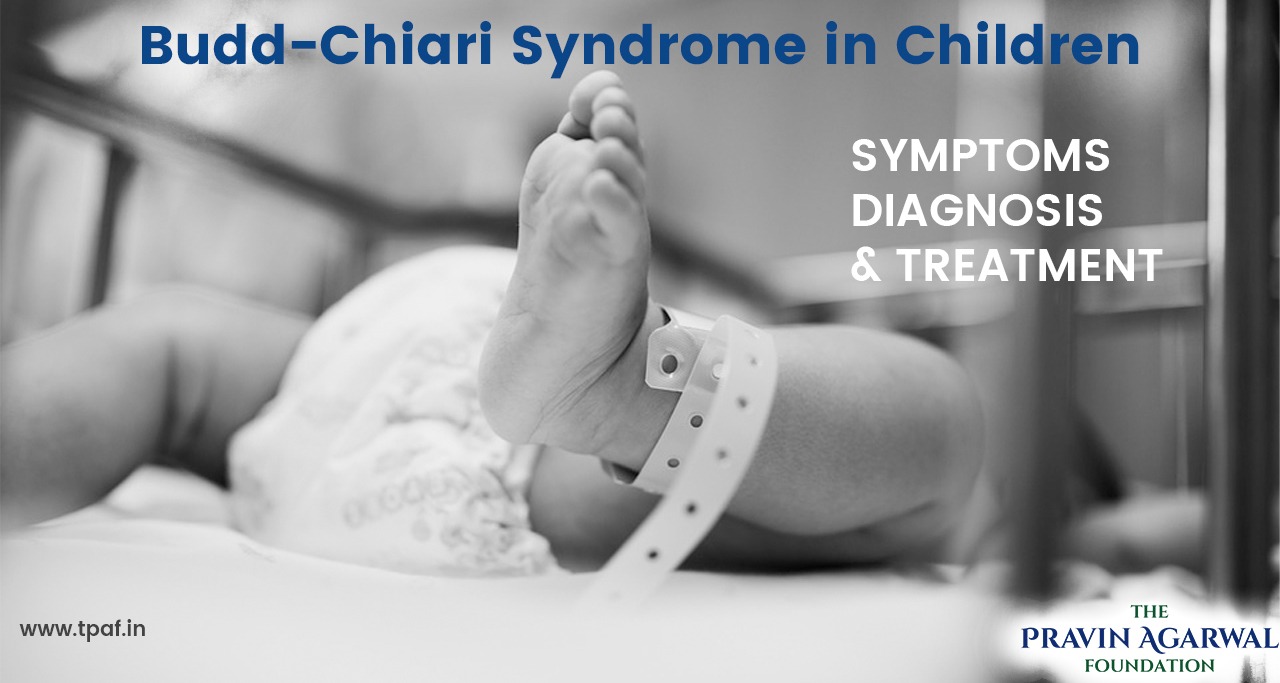Latest Update
Blogs

September 25,2019
/ adminBudd-Chiari Syndrome in Children: Symptoms, Diagnosis & Treatment
What is Budd-Chiari Syndrome?
Budd-Chiari syndrome is a rare liver disease and rarer in children. It is a heterogeneous group of the clinical condition that mostly occurs due to narrowing and obstruction of the hepatic veins. These veins of the liver play a major role in carrying the blood flow from the liver.
The contraction of the veins creates obstruction usually in the form of blood clots and prevents the free-blood flow from the liver to the heart. Usually, this syndrome occurs in 1/100,000 children in the general population worldwide.
How BCS Affects Liver Functions?
The obstruction of blood flow creates back pressure in the blood vessels in the liver. It leads to damage to the liver cells because there is a poor oxygen circulation. Most patients with BCS have an underlying condition that causes blood clots and obstructed the flow of blood to and fro from the liver to heart. Gradually, it causes permanent liver damage (cirrhosis) as the outflow of blood flow from the liver is affected.
What Causes Budd-Chiari Syndrome?
Generally, the cause is a disorder or clinical condition that converts blood into a clot. The exact cause of BCS in approximately 70% cases is unknown and approximately 10% of children with BCS have polycythemia.
Some of the common causes of BCS are:
- Chronic Myeloproliferative Disorders
- Pregnancy
- Oral Contraceptive Pills
- Excess Red Blood Cells
- Injury
- Connective Tissue Disorders
- Sickle Cell Diseases
- Inflammatory Bowel Disease
- Cancer
- Trauma to the Liver
- Clinical Infections such as Amebic abscess, Syphilis, Tuberculosis
- Alpha1-Antitrypsin (A1AT) Deficiency
Budd-Chiari Syndrome Symptoms in Children
Symptoms of BCS in children vary to some extent depending on whether the blockage develops gradually or occurs all of a sudden. Usually, the blockage and symptoms develop slowly over weeks or months.
Some of the most common symptoms of BCS in children are:
- Fatigue
- Swelling
- Weight Loss
- Jaundiced
- Nausea and vomiting
- Vomiting Blood
30 to 79% of children have the following symptoms.
- Abdominal Pain
- Cirrhosis
80 to 99% of children have the following symptoms.
- Enlarged spleen
- Portal Hypertension
- Ascites
Budd-Chiari Syndrome Diagnosis
Making a diagnosis for genetic or rare diseases is challenging. Generally, a diagnosis of BCS carried out based upon a detailed clinical assessment, a patient’s history, and some specialized tests. An internist, a gastroenterologist, or a general surgeon can diagnose BCS. First, they suspect cirrhosis as a main cause of the BCS. After a thorough physical examination, if the doctor finds that the liver is enlarged then the further testing incorporates the following tests.
- Laboratory blood test
- Ultrasound of the liver
- CT scan or MRI of the abdomen
- Liver biopsy
- Hepatic vein catheterization
- Prothrombotic workup
Budd-Chiari Syndrome Treatment
The best pediatric BCS treatment can be done by a team involving a pediatric gastroenterologist, pediatrician, a liver surgeon, and interventional radiologist. The treatment can be divided into 2 forms.
1) Supportive Care
In this, usually, the high doses of the corticosteroid drug, prednisone, or anticoagulants such as heparin may be prescribed. This is the case if blood clots have not been in place for a long time. These kinds of drugs are beneficial for the treatment of individuals with BCS.
2) Definitive Management
Generally, this can be done in the following form.
a. Radiological Intervention
In this, angioplasty, hepatic vein stenting or TIPSS is done. Typically, these procedures are less-invasive and successful in more than 90% of patients. But, the drawback is that they have to take anticoagulants lifelong. Even, regular Doppler examination is required.
b. Surgical Treatment
Another option is a surgical treatment that includes surgically created shunts. These kinds of procedures have high morbidity and as a result, they normally overtake radiological interventions.
c. Liver Transplant
Pediatric liver care such as liver transplant is typically done in children with cirrhosis and decomposition of liver functions.
How TPAF helps in Pediatric Liver Transplant?
These days, the various minimally invasive radiological interventions have improved outcomes for children afflicted with BCS. Parents and guardians can approach an NGO helping in liver transplants. Among the different NGOs, TPAF is at the forefront in ensuring that the BCS-afflicted child gets a good shot at living a normal and healthy life.
Here, at TAPF, our main aim is to offer financial aid for liver transplants to make pediatric liver transplants easily accessible and affordable for all. We support families of children in need of liver transplants by offering them financial backing, long-term support, and engaging them with various stakeholders. In this way, we are making every best effort to reform the pediatric liver care ecology in India.
If you are exploring financial support options for your little one suffering from chronic liver disease, then connect with us. We will help you set up a fundraiser to arrange for the funds needed for the child’s pediatric liver transplant.
You can also Join Our TPAF Facebook Group – The Pravin Agarwal Foundation (TPAF) Support group, created to form a network of families/caregivers of children who suffer from Liver Disease. We would request to join the platform to share experiences & concerns, provide emotional & social support and encourage one another in this journey.
 Donate
now
Donate
now



Related Posts
Aayush Jadav- A Remarkable Journey of Hope
moreKaivalya Mayane- A Remarkable Journey of Hope
moreVendant Joshi- A Remarkable Recovery
more